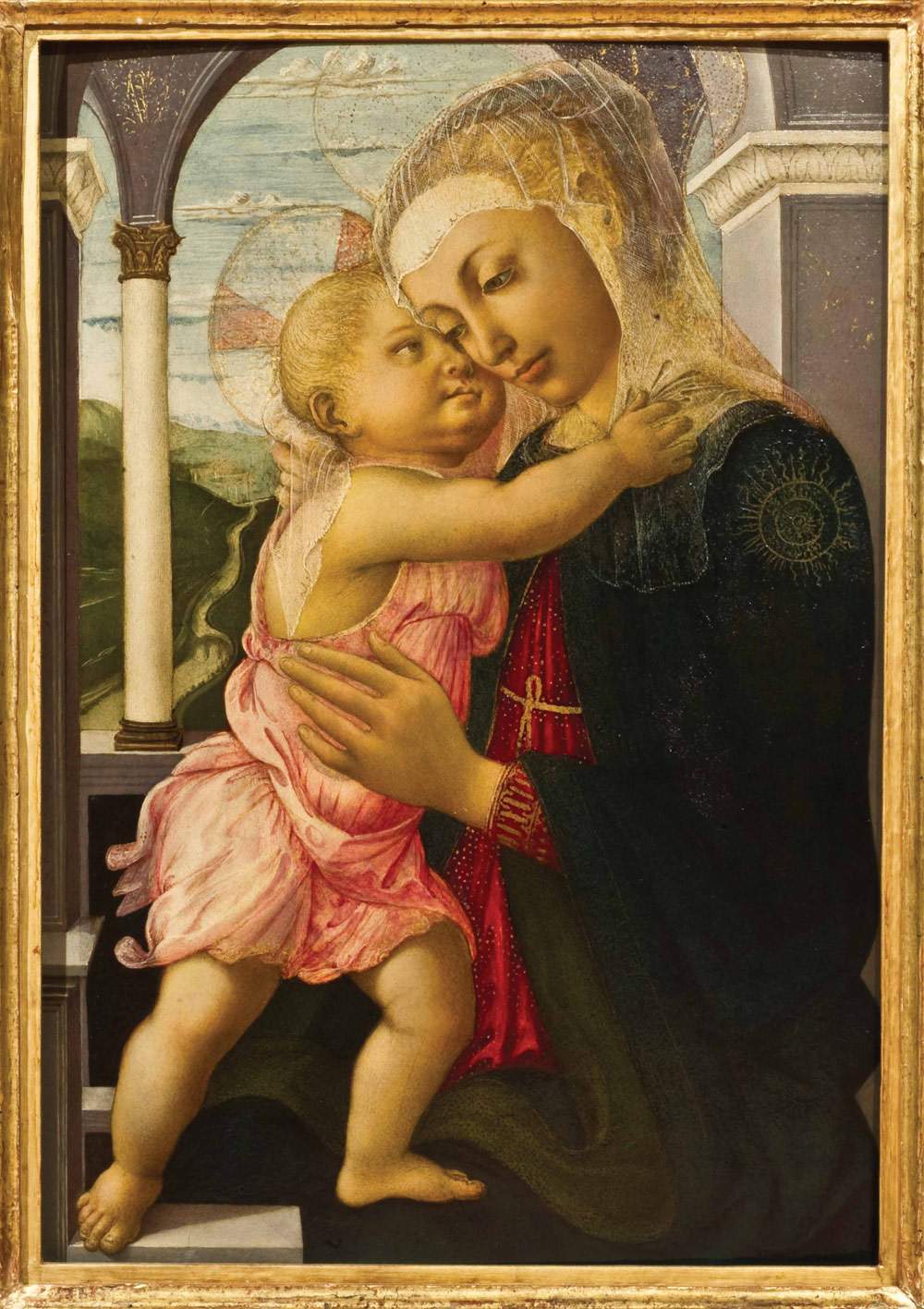The Madonna of the Loggia, one of the most controversial works by Sandro Botticelli (Florence, 1445 - 1510), as in the past not believed by all to be by his own hand (and now instead assigned by most critics to the early phase of his career), will leave the Uffizi, its home, in early September and leave for a tour of Russia, with three stops: Sept. 4-5 at the fifth Eastern Economic Forum of the University of Vladivostok (in which Italy is participating this year for the first time), Sept. 8-Nov. 6 at the Primorye State Gallery (also in Vladivostok), and finally, from Nov. 17, 2019 to Feb. 16, 2020, at the Hermitage in St. Petersburg. In the St. Petersburg museum, the Madonna of the Loggia will remain throughout the period when the Madonna Litta, traditionally attributed to Leonardo da Vinci, will be in Italy: in fact, the Hermitage work will also be in Italy between November and February.
It is therefore an exchange, since the work will not be displayed in the context of larger exhibitions. The two exhibitions, sponsored and supported by the Italian Embassy in Moscow, are organized by the Uffizi Galleries, the Primorye National Gallery in Vladivostok, and the State Hermitage Museum, with MondoMostre and the organizational support of Roscongress. On the initiative of the project’s general partner, PAO Sberbank, blind and visually impaired people will also have access to the masterpiece: along with the original work, a tactile copy of the painting will be displayed with the appropriate audio guide.
The Madonna of the Loggia is believed by critics, as mentioned, to be an early painting by Sandro Botticelli, who here reworks an ancient Byzantine iconography known as Glikophilousa (“sweet lover” or “sweet kiss”: however, the Madonna in Russian tradition is more often called Eleousa, literally “merciful”). Thus there are iconographic links with the Russian tradition: the Madonna Theotokos (i.e., “Mother of God”) by an artist identified as Vladimir (and also known as the “Madonna of Vladimir”), dating from the 13th century, is one of the earliest and most effective examples of the same iconography followed by Botticelli. In his Madonna della Loggia, the Florentine painter, we read in a Uffizi note, “expresses the natural feeling of a mother for her son in a composition that exudes a sense of tender intimacy: Mary appears pensive, foreshadowing the painful fate that awaits her son. The two figures are set within open Renaissance architecture in the background, a loggia from which the painting takes its title. This is a very early painting in Botticelli’s career, as suggested by the references to the style of Filippo Lippi, in whose workshop Sandro served his apprenticeship as a painter after having frequented, very young, the workshop of a goldsmith.”
The Madonna dates precisely from the period when Botticelli left Filippo Lippi’s workshop (we are around 1467) and approached Andrea del Verrocchio, the other great master instrumental in his training. The work was originally intended to be placed in a tabernacle frame, and was probably a “colmo da camera,” that is, a typical object intended for private devotion: this was the production to which artists generally devoted themselves before receiving more demanding commissions. We know nothing about the commissioning of the painting, which reached the Uffizi Gallery only in 1784.
“The exhibition of Sandro Botticelli’s Madonna of the Loggia, on the occasion of Italy’s first participation in the Eastern Economic Forum in Vladivostok,” stresses Pasquale Terracciano, Italian ambassador to Moscow, “constitutes a valuable opportunity to present the extraordinary beauty of Italian art in the Russian Far East, where in the past the Italian Embassy in Moscow had never organized exhibitions featuring the excellence of our pictorial art. The work will be exhibited at the Primorye National Gallery in Vladivostok, and then, from November, at the State Hermitage Museum in St. Petersburg, making an evocative ideal journey along the entire territory of the Federation. It will therefore be a unique event of great symbolic value, responding to the intention of bringing our culture to even the most distant regions, making our art more accessible to the many lovers of Italy throughout the Federation.”
Image: Sandro Botticelli, Madonna of the Loggia (c. 1467; tempera on panel, 72 x 50 cm; Florence, Uffizi Gallery)
 |
| Sandro Botticelli's Madonna of the Loggia leaves for a tour of Russia |
Warning: the translation into English of the original Italian article was created using automatic tools. We undertake to review all articles, but we do not guarantee the total absence of inaccuracies in the translation due to the program. You can find the original by clicking on the ITA button. If you find any mistake,please contact us.